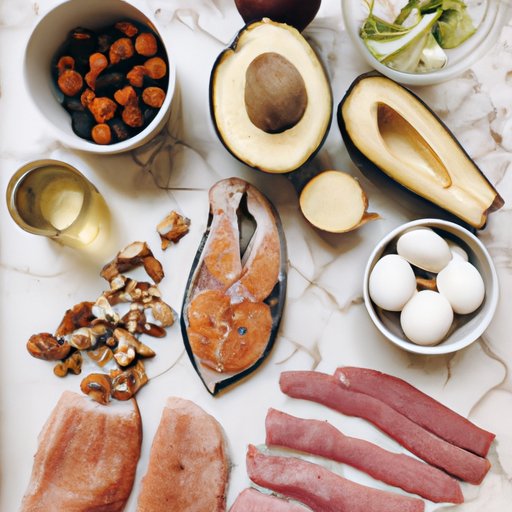Introduction
The ketogenic (or “keto”) diet is becoming increasingly popular among people looking to lose weight and improve their overall health. By drastically reducing the number of carbohydrates consumed, the body enters a state of ketosis where it begins burning fat for energy instead of glucose. The keto diet offers many potential health benefits and can help you reach your fitness goals. But what foods do you eat on a keto diet?

Overview of the Keto Diet
The keto diet is a high-fat, low-carbohydrate diet that forces the body to burn fat for fuel instead of glucose. It involves consuming fewer than 20-50 grams of carbohydrates per day while increasing your fat intake. The goal is to get your body into a state of ketosis, where it will begin to burn fat instead of glucose for energy. To achieve this, you must limit your carbohydrate intake and increase your fat consumption.

What Foods to Eat on a Keto Diet
The foods you eat on a keto diet will vary depending on your individual needs. Generally speaking, you should focus on eating high-fat, low-carb foods such as fatty cuts of meat, fish, eggs, nuts, seeds, avocados, and low-sugar fruits and vegetables. You should also include healthy fats such as olive oil, coconut oil, butter, and ghee. In addition, you should avoid sugary foods and beverages, processed foods, and grains.
Benefits of Eating a Keto Diet
Eating a keto diet has many potential health benefits, including weight loss, improved blood sugar levels, reduced inflammation, increased energy, better digestion, and improved mental clarity. Additionally, studies have shown that the keto diet may help reduce the risk of certain chronic diseases, such as diabetes, heart disease, and some forms of cancer.

Meal Planning on a Keto Diet
When it comes to meal planning on a keto diet, it’s important to include all the major food groups: protein, fat, and carbohydrates. Calculating your macros (the ratio of fat, protein, and carbs in your diet) is essential for success. A good ratio to aim for is 60-75% of calories from fat, 15-30% from protein, and 5-10% from carbohydrates. When shopping for groceries, it’s important to read labels and look for low-carb options. You should also stock up on healthy fats such as olive oil, coconut oil, butter, and ghee.
Fast-Food Options for a Keto Diet
While it’s best to stick to home-cooked meals on a keto diet, there are plenty of fast-food options available. Many restaurants now offer keto-friendly meals, such as salads with grilled chicken and no-carb dressings, burgers without buns, and tacos with lettuce wraps. Additionally, there are plenty of quick and easy snacks you can grab on the go, such as hard-boiled eggs, jerky, nuts, and cheese sticks.

How to Incorporate Healthy Fats into Your Keto Diet
Healthy fats are an essential part of any keto diet. They provide energy, support ketosis, and help keep you feeling full. Good sources of healthy fats include avocados, olives, nuts and seeds, fatty fish, grass-fed butter, coconut oil, and extra-virgin olive oil. For optimal health, it’s important to incorporate these fats into your diet in the form of whole foods, rather than relying on processed fats or oils.
Delicious Keto Recipes to Try
One of the best parts about following a keto diet is that you don’t have to give up delicious food. There are plenty of tasty recipes that are both keto-friendly and easy to make. For breakfast, you can enjoy bacon and eggs, avocado toast, or smoothie bowls. Lunch and dinner options include salads, soups, burgers, casseroles, and stir-fries. And for dessert, you can indulge in sugar-free treats like chocolate mousse and cheesecake.
Common Mistakes Made When Starting a Keto Diet
When starting a keto diet, it’s important to avoid common mistakes that can lead to frustration and failure. These include not eating enough fat, eating too many carbs, and not planning ahead. To ensure success, it’s important to calculate your macros, plan your meals in advance, and track your progress regularly.
Conclusion
The keto diet is a great way to lose weight, improve your health, and increase your energy levels. By following a high-fat, low-carb diet and incorporating healthy fats into your meals, you can experience the many benefits of the keto diet. With delicious recipes and fast-food options available, it’s easier than ever to start and maintain a successful keto lifestyle.
(Note: Is this article not meeting your expectations? Do you have knowledge or insights to share? Unlock new opportunities and expand your reach by joining our authors team. Click Registration to join us and share your expertise with our readers.)
